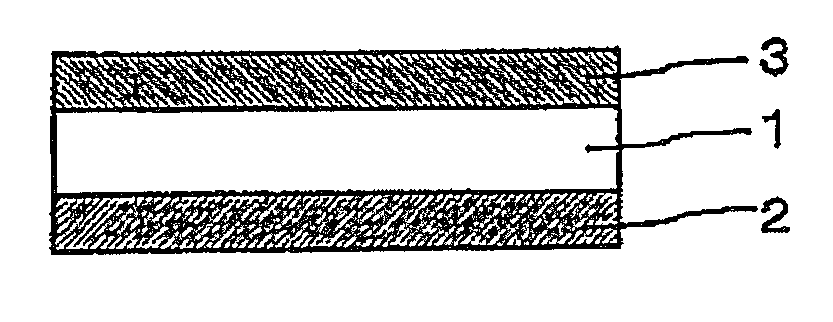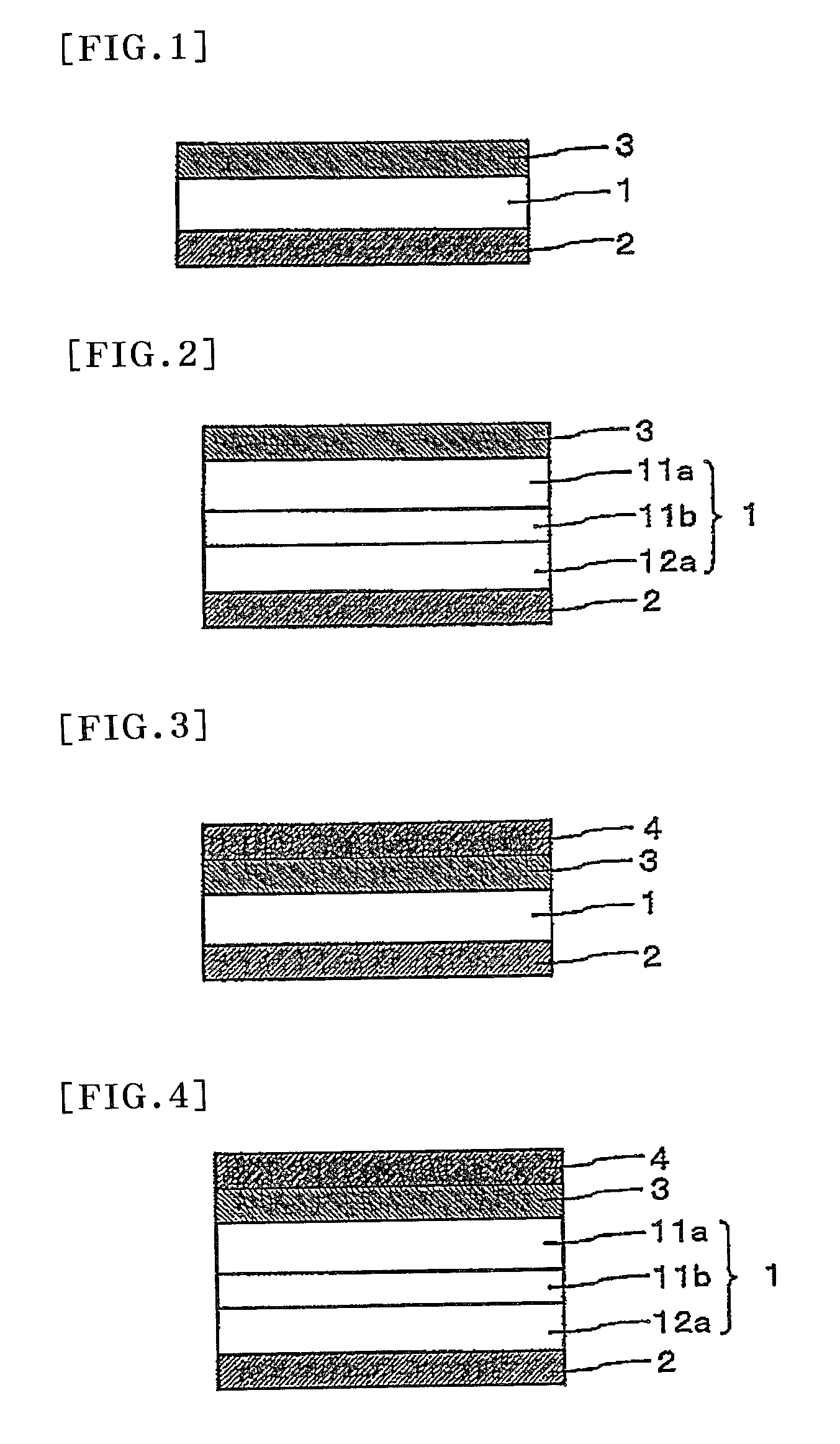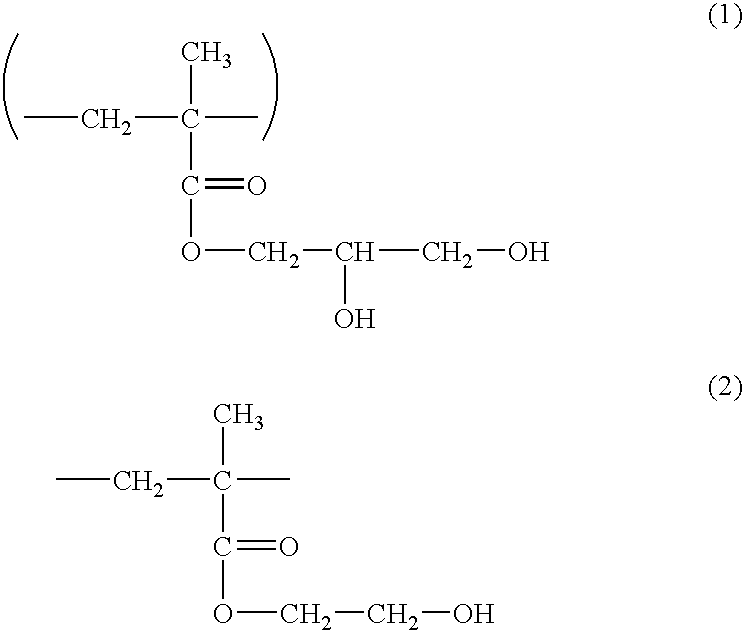Transparent conductive film and touch panel
a technology which is applied in the field of transparent conductive film and touch panel, can solve the problems of short life of touch panel, inability to use certain purposes, and low flexibility or workability, and achieve good scratch resistance
- Summary
- Abstract
- Description
- Claims
- Application Information
AI Technical Summary
Benefits of technology
Problems solved by technology
Method used
Image
Examples
example 1
Formation of Conductive Thin Layer
[0109]A transparent conductive thin layer made of a 25 nm-thick ITO film (2.00 in refractive index) was formed on one side of a 25 μm-thick polyethylene terephthalate film (PET Film 1) by a reactive sputtering method using a sintered material composed of 90% by weight of indium oxide and 10% by weight of tin monoxide in a 4×103 Torr atmosphere composed of 80% argon gas and 20% oxygen gas.
(Hard Coat Material)
[0110]A hard-coating material was prepared using the following materials: a urethane acrylate (hereinafter referred to as Component A) (100 parts of a urethane acrylate produced with pentaerythritol acrylate and hydrogenated xylene diisocyanate); polyol (meth)acrylate (hereinafter referred to as Component B) (49 parts of dipentaerythritol hexaacrylate (hereinafter referred to as Component B1 (monomer)), 41 parts of pentaerythritol tetraacrylate (hereinafter referred to as Component B4 (monomer)) and 24 parts of pentaerythritol triacrylate (herein...
example 2
[0114]In the process according to Example 1, 30 parts of PMMA particles (1.49 in refractive index) with an average particle size of 10 μm were added to the total amount of the resin components, when the hard coating material was prepared. A transparent conductive laminate and a touch panel were prepared using the process of Example 1, except that the resulting hard coating material was used instead.
examples 3 to 8
[0115]Transparent conductive laminates and touch panels were prepared using the process of Example 2, except that the amount of the addition of fine particles, the average particle size, and the thickness of the hard-coating layer were changed as shown in Table 1.
PUM
| Property | Measurement | Unit |
|---|---|---|
| thickness | aaaaa | aaaaa |
| particle size | aaaaa | aaaaa |
| thickness | aaaaa | aaaaa |
Abstract
Description
Claims
Application Information
 Login to View More
Login to View More - R&D
- Intellectual Property
- Life Sciences
- Materials
- Tech Scout
- Unparalleled Data Quality
- Higher Quality Content
- 60% Fewer Hallucinations
Browse by: Latest US Patents, China's latest patents, Technical Efficacy Thesaurus, Application Domain, Technology Topic, Popular Technical Reports.
© 2025 PatSnap. All rights reserved.Legal|Privacy policy|Modern Slavery Act Transparency Statement|Sitemap|About US| Contact US: help@patsnap.com



